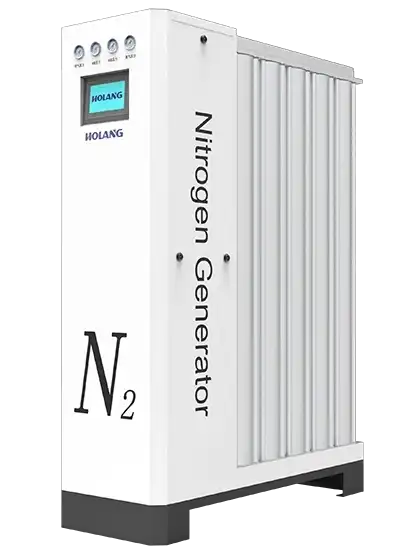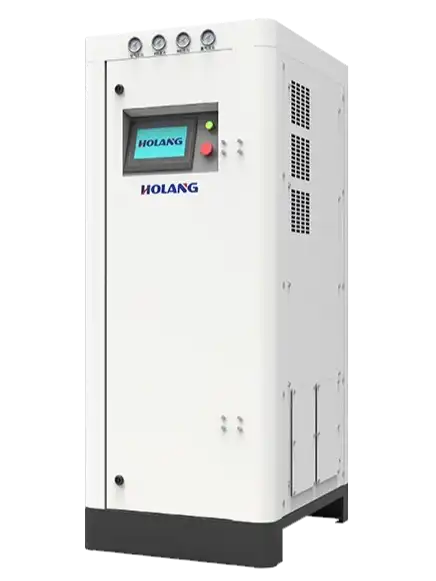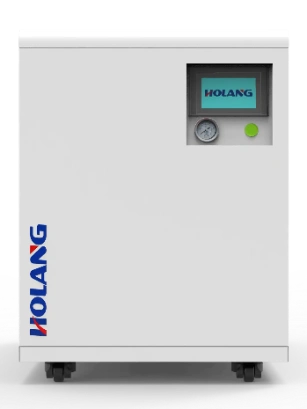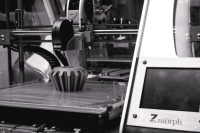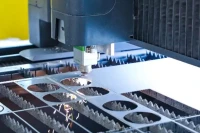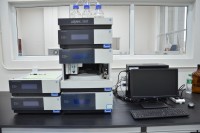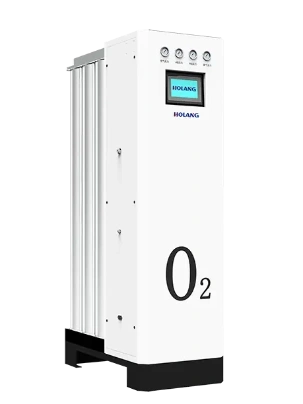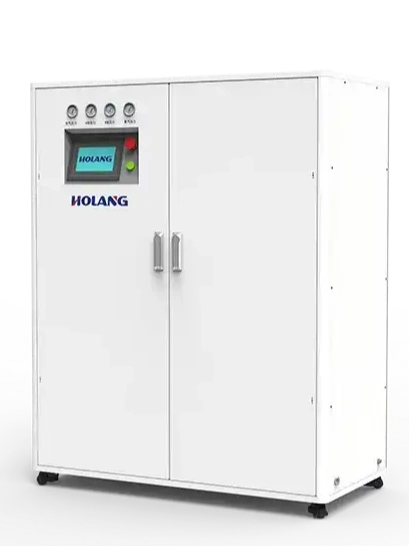More companies are now adopting Nitrogen Generators as their on-site solution for a stable and cost-effective supply of nitrogen gas. When people check system specifications, the focus usually falls on the generator itself—capacity, purity, and flow rate. Yet the real driving force behind every system is not the generator box but the Air Compressor.
A Nitrogen Generator cannot produce nitrogen gas without compressed air. If the Air Compressor is undersized or poorly chosen, the system will struggle. Output volume drops, purity fluctuates, energy use rises, and the overall lifespan of the equipment shrinks. Put simply, the compressor is the first moving part of the entire chain, and it determines whether the Nitrogen Generator runs smoothly or constantly breaks rhythm.
1. Why the Air Compressor Matters in a Nitrogen Generator System
A Nitrogen Generator works by taking compressed air, pushing it to a set pressure, and feeding it into an adsorption tower or a membrane module. Molecular sieves or membranes then separate nitrogen from oxygen.
Without a stable stream of compressed air, there is no stable nitrogen output. The compressor’s pressure and flow are the “input conditions” for the generator. If the air supply wavers, the result is inevitable: purity drops, flow fluctuates, and in the worst cases, production grinds to a halt.
That is why every company comparing generator models should give the Air Compressor equal attention. A Nitrogen Generator without the right compressor is like a car without an engine—it looks complete but it cannot perform.
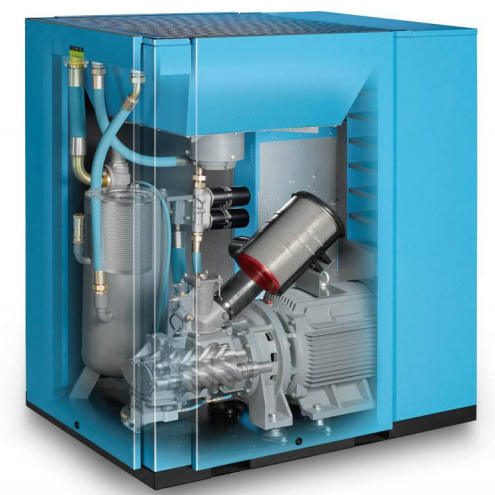
2. Different Compressor Types and Their Fit in Nitrogen Gas Systems
Screw Compressors
-
Strengths: Provide continuous air, operate efficiently, and fit well in medium to large industrial facilities.
-
Weaknesses: Higher upfront cost and require trained service teams.
Piston Compressors
-
Strengths: Affordable and useful for small or occasional nitrogen gas needs.
-
Weaknesses: Loud operation, frequent servicing, shorter life cycle.
Scroll Compressors
-
Strengths: Quiet, compact, and often used in laboratories and precision industries.
-
Weaknesses: Limited air flow, suitable only for smaller Nitrogen Generators.
Case Example:
An electronics manufacturer originally paired a piston compressor with a small site Nitrogen Generator. As the factory expanded, nitrogen demand doubled, but the piston unit could not provide stable air supply. They upgraded to an oil-free screw compressor. The results were immediate—nitrogen output stabilized, maintenance downtime almost disappeared, and production efficiency went up.
Another example comes from the food packaging sector. A plant producing vacuum-sealed coffee needed nitrogen gas to flush oxygen from every pack. Their old compressor could not maintain stable pressure during peak hours, and the nitrogen purity often fell below target. After switching to a properly sized screw compressor, the company achieved not only consistent quality but also reduced product waste.
3. Oil-Free vs. Oil-Injected Compressors: A Long-Term Perspective
Oil-injected compressors may look attractive because of their lower purchase price, but they carry a hidden risk. Even small traces of oil vapor can enter the Nitrogen Generator, pollute the molecular sieve, and shorten its lifespan.
Oil-free compressors cost more at the beginning, yet they deliver clean air. For industries like food, the medicine industry, and electronics—where purity and cleanliness are essential—oil-free is the only practical option.
Viewed over a span of five to ten years, oil-free compressors are more economical. They avoid expensive replacements, reduce unexpected downtime, and protect both product quality and company reputation. Many companies that calculate total cost of ownership discover that an oil-free solution pays for itself within a few years.
4. Energy Consumption: The Elephant in the Room
In most nitrogen generation systems, the Air Compressor accounts for more than 70% of total energy use. That fact alone makes compressor selection one of the most important cost decisions.
Companies can improve efficiency in several ways:
-
Variable Speed Compressors: These units adjust output to match actual nitrogen demand, reducing wasted power.
-
Buffer Tanks: Correctly sized tanks cut down on frequent start-stop cycles, protecting the compressor and improving energy efficiency.
-
Modular Nitrogen Generators: When paired with flexible compressor control, they allow operators to run units on demand, optimizing energy use.
Another often-overlooked factor is maintenance. A dirty air filter or leaking pipe increases compressor workload and raises power bills. Regular inspection and preventive maintenance are simple measures that can reduce energy use by 5–10%, which adds up quickly in facilities that run 24/7.
The lesson is clear: when calculating the cost of producing nitrogen gas, companies must include compressor electricity bills, not just the sticker price of the generator itself.
5. How the Compressor Shapes Nitrogen Quality
The Air Compressor does more than supply volume. It directly shapes the purity and reliability of nitrogen gas:
-
Moisture Control: Too much water vapor damages molecular sieves and shortens their lifespan.
-
Oil Pollution: Oil vapor is the number-one enemy of adsorbent materials.
-
Pressure Stability: Pressure swings cause nitrogen purity to rise and fall, which affects sensitive production processes.
That is why professional suppliers design full packages rather than selling a single stand-alone generator. A complete system includes the compressor, dryer, filters, and tanks—each matched to deliver clean, dry, and stable compressed air to the Nitrogen Generator.
In industries such as laser cutting or biomedicine, even minor purity fluctuations can ruin expensive materials or compromise safety. Stable compressed air is not a luxury—it is a requirement.
6. Common Mistakes in Equipment Selection
-
Focusing only on generator price: Ignoring compressor quality leads to higher hidden costs over time.
-
Undersizing the compressor: Running a unit at full load year-round shortens its life and increases energy bills.
-
Overlooking noise: A noisy compressor can disrupt labs and electronics production environments.
-
Skipping system integration: Buying separate components from different suppliers often results in mismatched equipment that underperforms.
The smarter approach is to choose a supplier that offers a complete, matched solution—Nitrogen Generator and Air Compressor together—so the system functions as one reliable unit.

7. Questions Companies Should Ask Before Buying
-
What is the average nitrogen demand per hour, and what is the peak demand?
-
Can the compressor handle both peak and average load without constant overwork?
-
Is the compressor oil-free, and if not, what filtration steps are included?
-
How much energy will the compressor consume each year, and what is the cost at local electricity rates?
-
What backup options exist if one compressor goes down?
Asking these questions upfront prevents costly mistakes later.
8. Conclusion: Air Compressors Are the First Power of Nitrogen Generation
The strength of a Nitrogen Generator depends entirely on the Air Compressor that feeds it. With the right compressor, companies gain consistent flow, stable purity, reduced energy costs, and a longer system lifespan. Without it, even the most advanced generator cannot perform.
Recommended Product | HOLANG Modular Nitrogen Generator – NPL Series
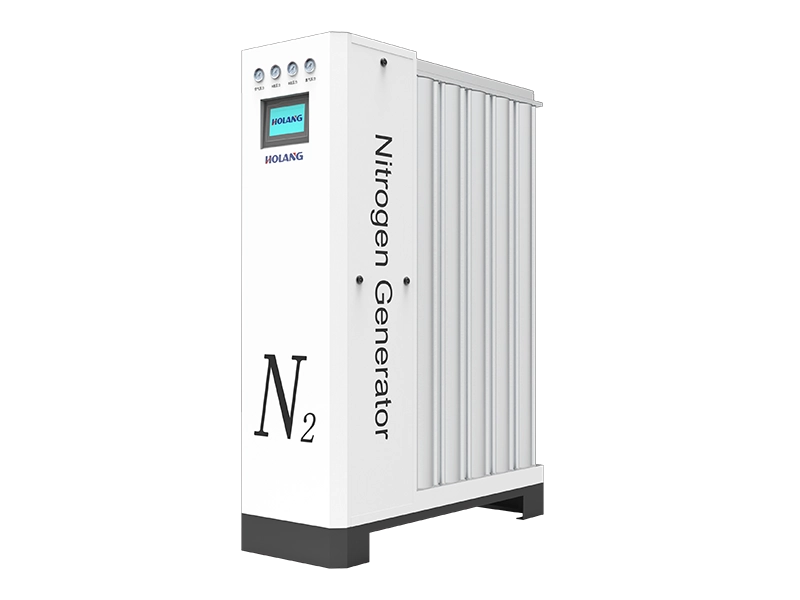
For businesses seeking a full solution—from Air Compressor to Nitrogen Generator—HOLANG’s NPL Series provides:
-
Modular Design: Units run in parallel, ensuring redundancy and easy expansion.
-
High Purity Output: Adjustable from 99.9% up to 99.999% nitrogen gas.
-
Energy Optimization: Designed to integrate with variable-speed compressors, cutting energy use.
-
Cross-Industry Coverage: Trusted by electronics, food packaging, laser cutting, and medical industries.
To learn more about complete system options, visit our product center and see how a properly paired Nitrogen Generator and Air Compressor can secure your long-term gas supply.
